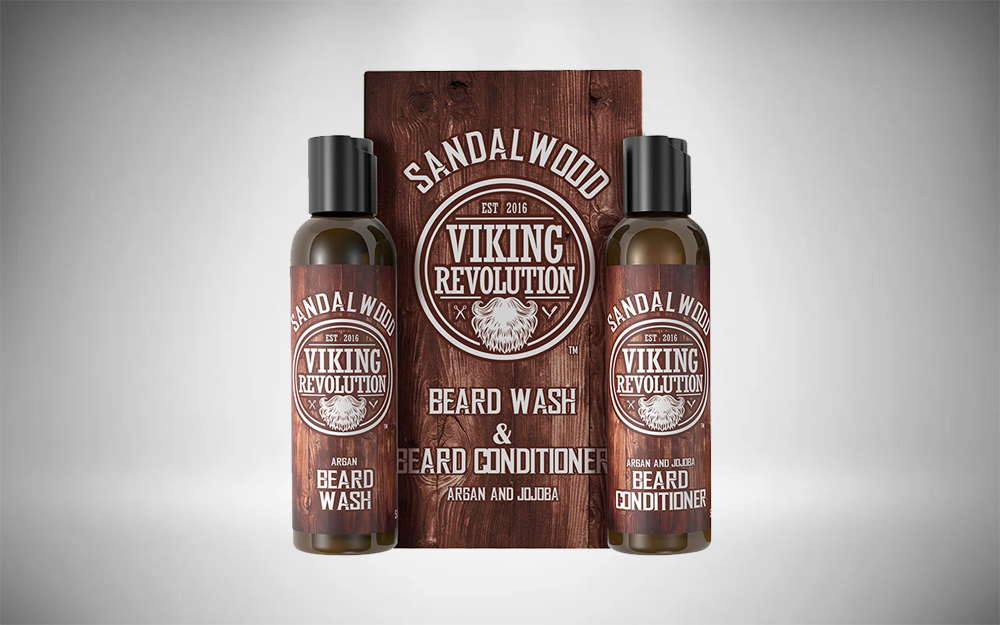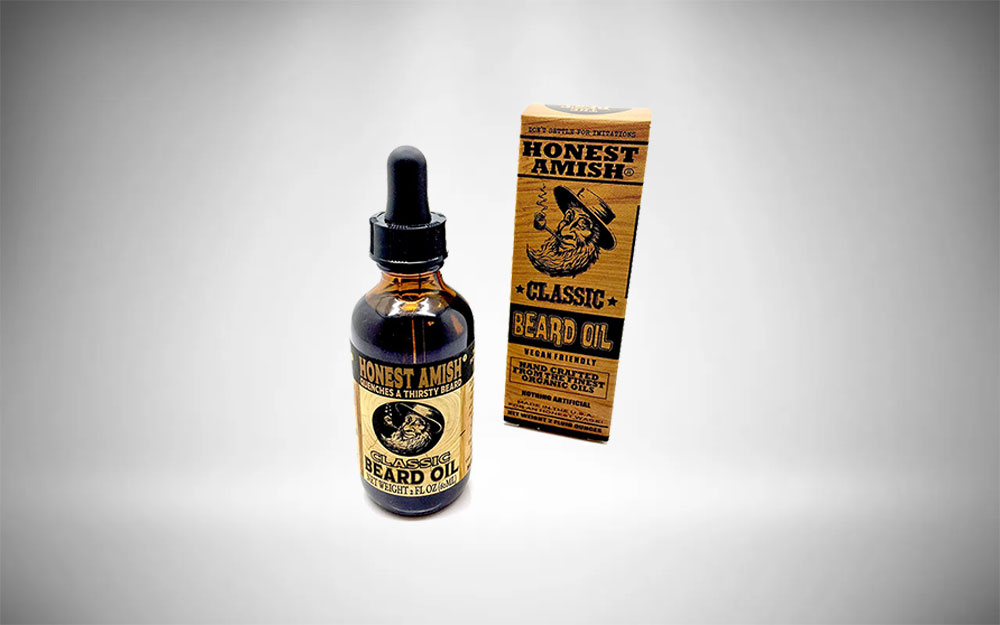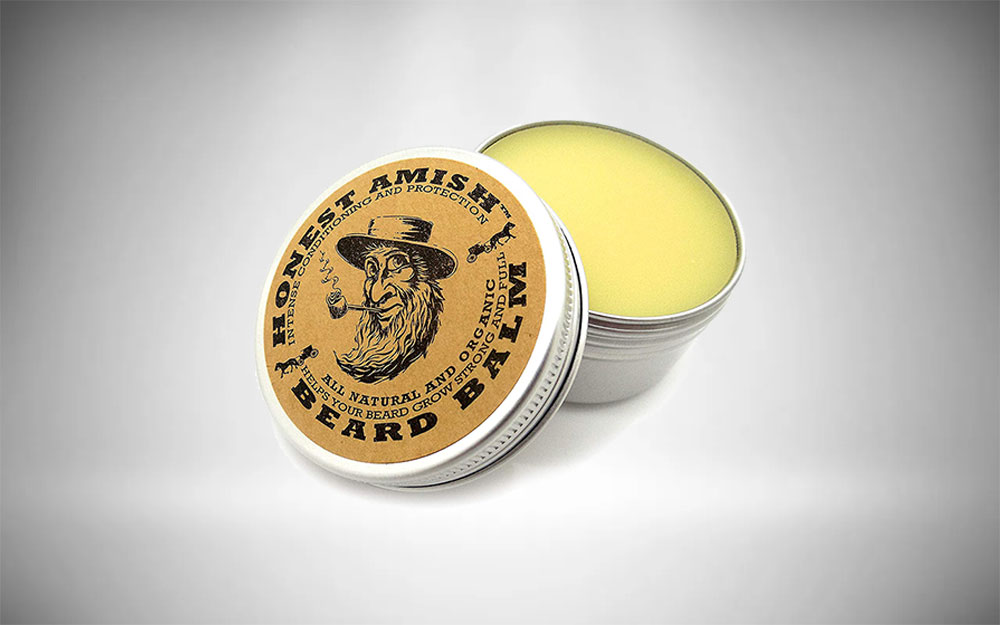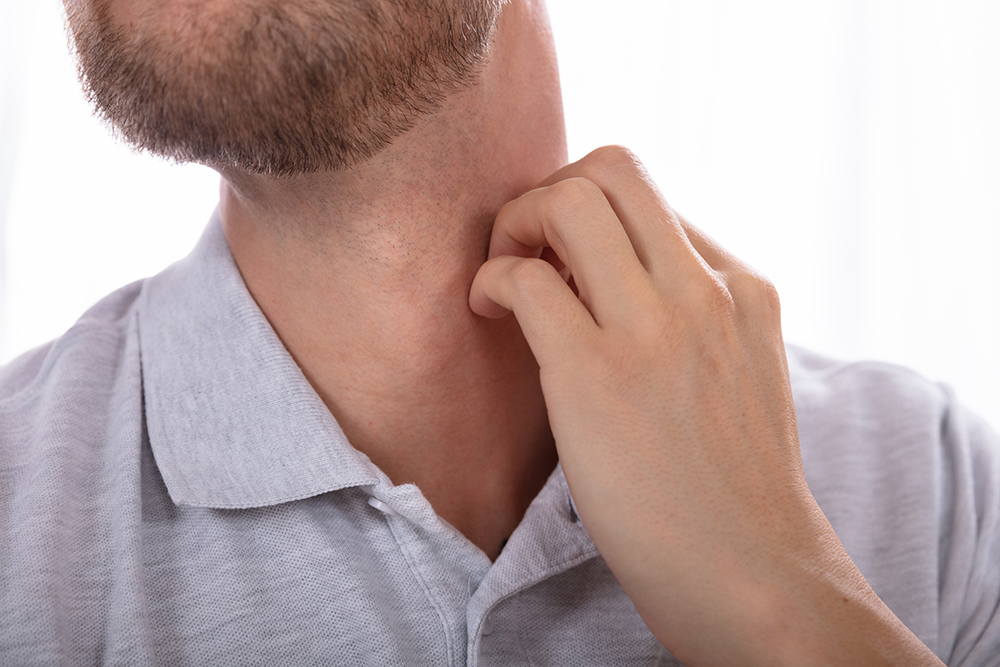Beard dandruff tumbling down your chin onto your shirt can be downright embarrassing. You silently hope none of your colleagues at the coffee table noticed–but the hushed exchanges tell another story!
View in gallery
You’ve invested your time and resources to pull off an impressive beard, so beardruff should be the last thing to spoil the party. Good news though! You don’t need to suffer in silence anymore.
We’ll shortly uncover the causes and the most effective ways to conquer beardruff. Keep reading to learn more.
Beardruff in a Nutshell
Beardruff, aka beard dandruff, forms from a buildup of dead skin cells on the skin beneath the beard. As a result, it becomes red and flaky, and worst of all itchy.
Past scientific research indicates that dandruff affects one in every two adults worldwide and it’s also more common in men than women, beardruff aside. So if nothing else, you can take comfort in the numbers knowing that you’re not alone.
What Causes Beard Dandruff?
View in gallery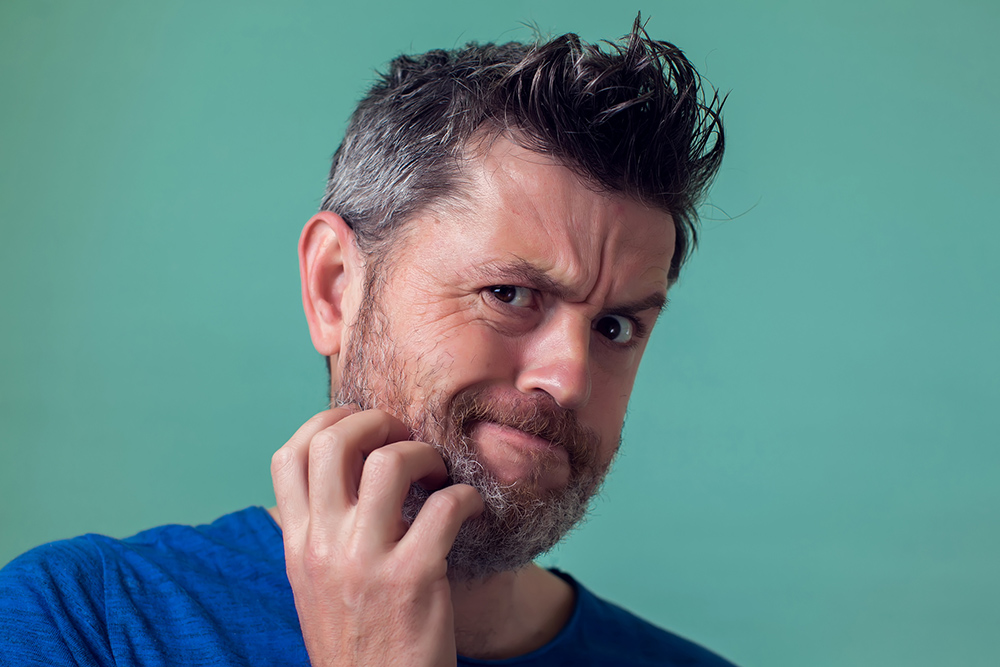
If you’ve ever wondered “why does my beard itch and flake”, there are numerous possibilities. It could be as a result of dry skin, microbes, or sensitivity to beard grooming products. Here’s a run-through of the most common causes of beardruff.
Seborrheic Dermatitis
The most common cause of beardruff occurs as a result Seborrheic Dermatitis. This condition caused by a beard fungus malassezia globosa, which grows in oily areas (mostly the scalp and face).
This fungus breaks down sebum to produce oleic acid, which in turn can act as an irritant to the skin causing itching. The more oily the skin the more the fungus multiplies, leading to more production of oleic acid hence more itching and more dandruff on the face.
Abnormal Skin Cell Replacement
Some people’s body systems react to the breakdown of oils on the skin by forming new skin cells at a much faster rate. It takes up to a month for new skin cells on the scalp to mature and shed on normal skin. But with a dandruff infection, it could take less than a week. This can lead to an accumulation of dead cells which presents as beard dandruff.
Contact Dermatitis
Contact dermatitis is an irritation on the skin caused by hair care products or dyes. In this case, it means your skin is sensitive to an irritant, or allergen in the product and produces an itchy beard rash that can be painful.
Dry Skin Under Beard
View in gallery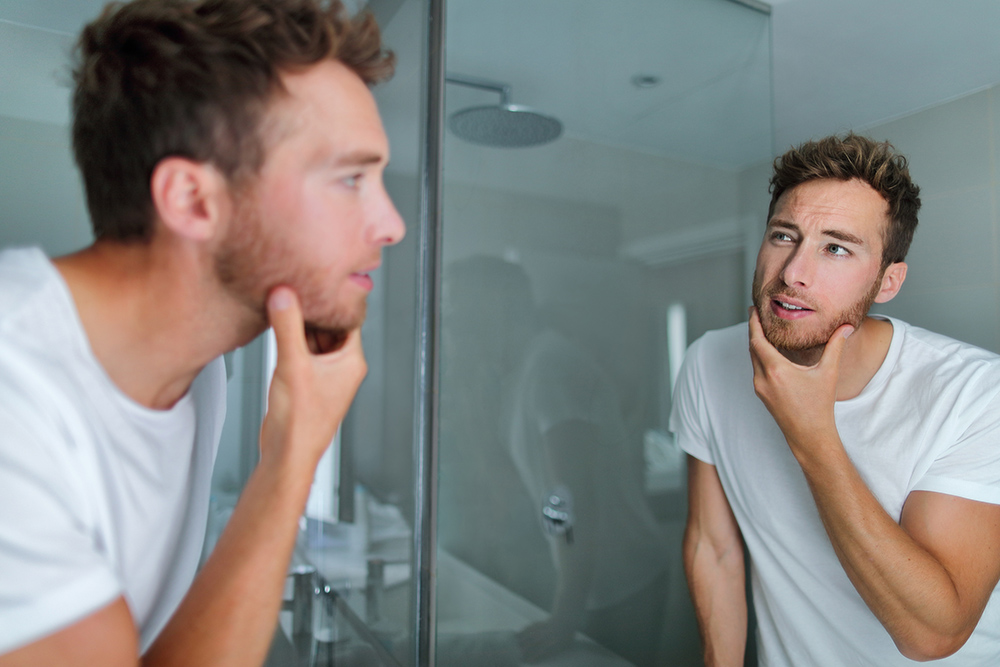
Beardruff could also occur as a result of dry skin. This manifests as small flakes in the beard without any evidence of irritated skin. Cold winter air or dry climates often make beardruff from dry skin worse.
Flakes caused by dry skin differ from a case of Seborrheic Dermatitis. They’re usually smaller and less oily, with minimal actual irritation on the skin. Nonetheless, cold and dry climatic conditions that lead to dry skin will also exacerbate a case of Seborrheic Dermatitis.
Yeast Infection (Candida)
There is almost always a small amount of yeast on your skin, which normally won’t affect you negatively. But when a part of your body is excessively moist and deprived of sunlight and a free flow of air, the yeast thrives.
Sunlight will naturally decimate yeast cells on your skin or slow down their growth. However, a growing beard may restrict the amount of sunlight reaching your skin and could lead to beard dandruff caused by yeast.
Scientific Research has established that Candida is the fungus most responsible for yeast infections on the skin. Apart from the warm and moist conditions of your beard, other factors can put you at a high risk of a beard dandruff infection caused by yeast. These include:
- Poor diet
- Stress and anxiety
- Certain chemicals in your shampoos and other grooming products
- Underlying medical conditions
- Particular medications
- Cuts you sustain while shaving your beard
Scalp yeast infection and seborrheic dermatitis manifest symptoms that are quite similar. The main difference is that in most people seborrheic dermatitis is persistent and will recur severally and mainly caused by oily skin. On the other hand, a scalp yeast infection will usually disappear after proper treatment has been administered.
Possible Side Effect of Minoxidil
Some people will poor beard growth use minoxidil to spur beard growth. There’s nothing wrong with doing that. But, beware that one of its most prevalent side effects is it causes dry skin and flakes on your beard.
Clearly, with all these possible causes of beardruff, it can be had to identify the culprit in your own situation. The solution is seeking the advice of a professional. A dermatologist can be able to help you identify the actual cause of your beardruff.
How to Get Rid of Beard Dandruff with a Routine
View in gallery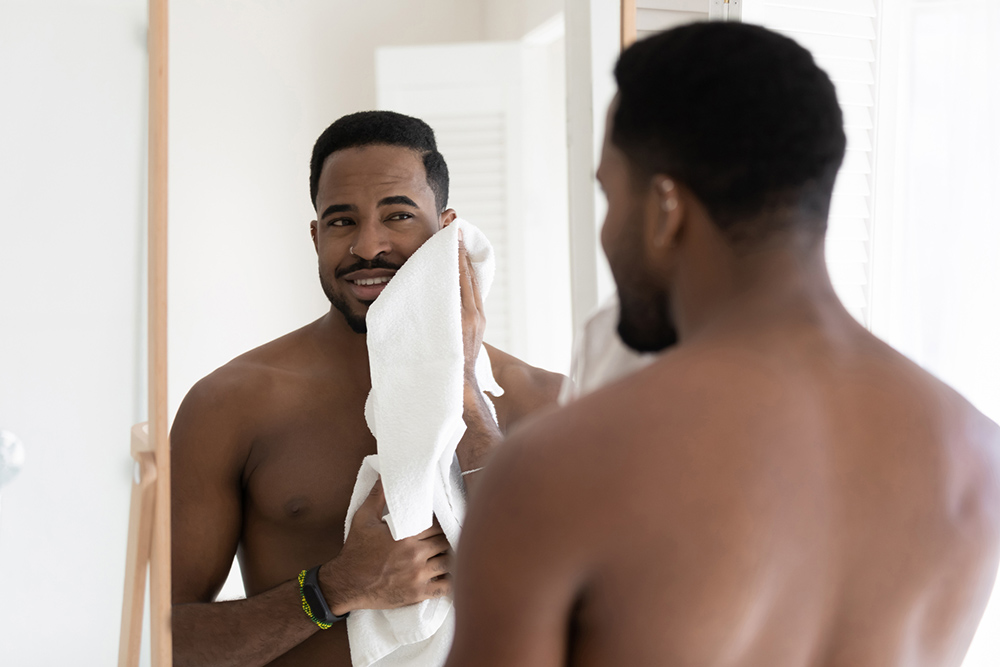
Effective ways of eliminating beardruff entail the removal of dead skin cells and minimizing the amount of oil in the beard. A plan to control the amount of oil in the beard hinders the formation of a flaky beard.
A working formula to eliminate beardruff includes frequent exfoliation, regular washing, and moisturizing. A consistent regimen for a week or two will begin to show signs of recovery.
Step 1: Exfoliate
Exfoliation eliminates dead skin cells that cause beardruff. This should be the first step in a beard care routine aimed at getting rid of beardruff.
Beard Brush
A boar bristle brush is ideal for this purpose. This brush has fine bristles that gently glide through the beard without irritating the underlying skin.
Brushing helps to bring any underlying beardruff to the surface. The beard brush also plays another critical role in spreading out oils from your skin.
Step 2: Wash Your Beard Daily
The beard, if not cleaned regularly, can be a breeding ground for unwanted microbes. Most people are likely to touch their beards as they ponder on life’s issues or simply as a habit. As your hands are constantly touching many germs-ridden surfaces, the same can easily be transferred to your beard.
Beard positioning around the mouth also makes it prone to food and drink spills.
Beard Dandruff Shampoo
One of the best remedies for beard dandruff, therefore, involves cleaning your beard daily with mild shampoo to remove germs, food, and drink particles. Using anti-beard dandruff shampoo is even better.
The go-to shampoos for beardruff should contain the following dandruff-fighting ingredients: ketoconazole, tea tree oil, coal tar, selenium sulfide, pyrithione zinc. If you have sensitive or dry skin, avoid the traditional shampoos as they might worsen your beardruff.
Step 3: Moisturize Your Beard
This step is key in preventing dry skin, which if unaddressed, can cause beardruff. Moisturizing helps to rehydrate the skin preventing it from drying out.
Moisturizing the beard can be done using the following;
Beard Oil
Beard dandruff oil contain carrier oil and essential oils. Carrier oils constitute 98-99% of beard oil. These oils tend to be mild and as a result, they do not irritate the skin. They help to soften the beard. Commonly used carrier oils include almond oil, grapeseed oil, and argan oil.
Essential oils are responsible for creating a natural fragrance in the oils. They are highly irritating if used on their own and hence the need to combine them with a carrier oil.
Beard dandruff oil, however, moisturizes the skin preventing dryness. It also helps to stop beard itch and beard dandruff. Regular application also helps to soften the beard and improve its appearance.
Beard Balm
Whereas beard oil is a liquid, beard balm is solid. Beard balms are simply beard oils to which butter and beeswax have been added. Beard balms, therefore, comprise carrier oil, essential oil, butter, and beeswax.
Being solid, beard balms help to shape the beard causing it to stay in place.
Pro Tips to Effectively Moisturize Your Beard
- Avoid applying too much beard oil. 8-10 drops of oil should be enough.
- Put the oil in your hands and apply it to the beard starting from the roots to the tip.
- Massage in the oil to ensure even distribution of the oil throughout the beard.
Note on General Men’s Moisturizers
Beard moisturizers help to hydrate your beard and prevent the formation of beardruff. If you do not have any beard moisturizers, as a last resort, you may use your face moisturizer. Though this isn’t ideal, it can prove worthwhile in controlling and eliminating beardruff.
The essence here is that if it works for the rest of your face, it shouldn’t hurt the skin underneath the beard. If it does nothing else, it will at the very least, help to prevent skin dryness which exacerbates beardruff.
The best face moisturizers for this are the ones that contain natural oils without any harsh chemicals.
Step 4: Brush and Style Your Beard
View in gallery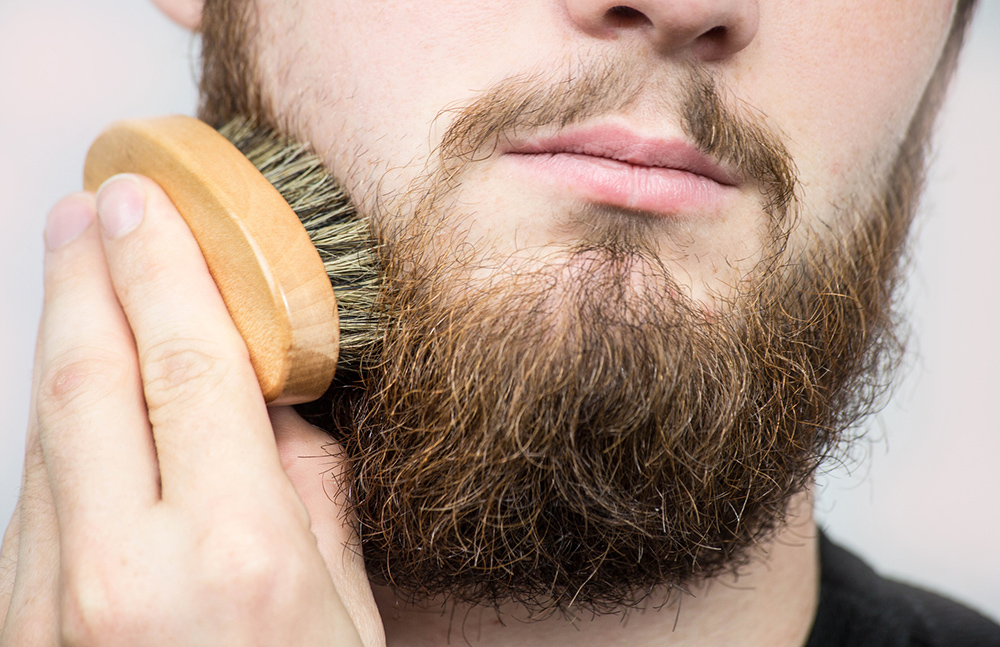
Next, brush and style your beard using a brush with soft bristles. Brush slowly starting from the roots to the tips. Make sure to brush from the front, sides, and back. Other than detangling the beard, brushing in this manner helps to ensure even distribution of the beard oil.
Avoid over-brushing your beard as this can cause further irritation of the skin which can worsen beardruff. Brushing 3-4 times a day should be enough.
How to Prevent Beardruff from Coming Back
It’s one thing to get rid of beard dandruff, but preventing beardruff from recurring is equally important. The most effective way to prevent beardruff from coming back is by adhering to your grooming routine. Wash and moisturize your beard consistently.
You’ll need to keep tabs on the feel of your skin. Check to see if it’s dry and itchy, or is well-moisturized and supple. If it feels too dry, you could use a few more drops of beard oil. You’ll be particularly more vulnerable when the weather is cold and dry. If necessary, use a stronger moisturizer for such weather conditions.
Additionally, reduce the frequency of using medicated products such as shampoos once you’ve been able to effectively eliminate beardruff. Cut down use to twice a week, at the most.
Here are the most effective ways to prevent beardruff from coming back.
Manage Your Stress Levels
You can’t eliminate stress from your world. Be that as it may, lowering your stress levels will improve your beard, skin, and hair quality tremendously. An increase in levels of stress makes you more susceptible to instances of beardruff.
One of the best ways to manage stress is by getting quality sleep consistently. This will give you the energy to function at your best.
Keep a Healthy Diet
There’s a chain of health benefits you get from eating a well-balanced diet. Besides preventing diseases and infection, a good diet certainly delivers healthy skin that’s well-moisturized.
A proper diet consisting of the appropriate minerals and vitamins nourishes the skin and keeps it from drying.
View in gallery
Foods that are rich in Vitamins A, C, and E are particularly important for the maintenance of healthy skin and beards. That includes foods such as dairy products, eggs, fish, liver, and sweet potatoes that repair skin and stimulate hair growth.
Moreover, Vitamin C and E encourage the production of sebum oil that keeps your skin hydrated. Foods that have these vitamins in abundance include citrus fruits, peppers, blackcurrants, wheat germ oil, peanuts, soyabean oil, sunflower, pumpkins, strawberries, and many more.
Exercise Regularly
Exercise is a vital component for a healthy body and a vibrant lifestyle. When you exercise, you improve the health of your skin and beard. And this is how:
- Working out is a proven stress reliever. Stress can cause beardruff and dry skin.
- Exercising balances your hormones to function at the optimum. That causes efficient skin regeneration and also boosts the production of sebum oil that hydrates the skin.
- Exercising enhances effective blood flow to the vessels and skin. This causes the effective distribution of nutrients to the skin making the skin, hair, and beard healthier.
Use a Lactic-Acid Cleanser
Unlike synthetic acids, lactic acid is a natural acid that is safe to use on your beard. It’s a powerful exfoliation agent that’s derived from milk, vegetables, and fruits. It’s a common component in numerous OVC products such as anti-aging creams.
As an exfoliation agent, lactic acid is gentle and works by eliminating dead cells on your skin. Its action is unlike other harsh chemicals such as glycolic acid that’s found in some chemical peels.
Lactic acid has a further advantage in hydrating the skin.
To use lactic acid as an exfoliation agent, apply and lather it up in your beard, then wash it off. It effectively eliminates flaky dry skin and effectively maintains you from beardruff.
Use Hydrocortisone Cream
Hydrocortisone creams can be purchased over the counter and are effective against itchiness and reddening of the skin.
Apply by rubbing the cream into the affected parts at least twice a day. It packs a punch against itchiness and discomfort of the skin. Moreover, it invigorates the skin and keeps the rest of the skin from the infection that’s causing itchiness.
Only move to a more potent cream if it fails but be careful to consult your dermatologist before doing so.
Seek Treatment from a Dermatologist
If the beardruff persists despite the outlined interventions see a specialist who’ll recommend more appropriate treatment options.
A dermatologist will be in a position to diagnose if there’s an underlying cause to your condition and prescribe the best way to manage the condition. Early diagnosis of conditions is an efficient way to manage symptoms that may bring about adverse effects in the future.
Risk Factors for Beardruff
While we’re all susceptible to dandruff in general, certain triggers increase the risk. We’ll discuss the most common ones here. Check for those that you’re most prone to below:
Having Oily Skin
As previously discussed, naturally oily skin predisposes you to an increased risk of beardruff.
Prevalence of Other Skin Conditions
Having had other skin disorders such as psoriasis, rosacea, and eczema can spark off or worsen seborrheic dermatitis. You’re most likely to suffer from beardruff if you’re plagued by these skin conditions.
Shampooing Habits
Failing to wash your beard frequently can worsen a situation of beardruff if you’re already a victim. That’s because it’ll lead to oil build-ups underneath the beard that can cause beardruff.
RELATED READING: The Best Shampoo for Men
Age
Studies show dandruff and beardruff oftentimes kicking in during adolescence and culminating at around 20. It’s less frequent for people over the age of 50. However, for some, the problem is a lifelong challenge.
Gender
Men are often more susceptible to dandruff than women. Male hormones are thought to influence the secretion of oils from the sebaceous glands which increases dandruff and beardruff. (Obviously, in most cases men are the ones getting beardruff specifically.)
A Compromised Immune System
A weakened immune system catalyzes the formation of beardruff. Diseases such as HIV or AIDS, alcoholic pancreatitis, or hepatitis lead to a weakened immune system. Seborrheic dermatitis also occurs in people who’ve been through an organ transplant that’s weakened their immunity.
Finals Words on Fixing Itchy Beard Dandruff
Beardruff is a common problem that affects lots of people and is pretty embarrassing. We have skimmed through the causes of beard dandruff and the risk factors associated with it. Fortunately, an itchy beard can be controlled by using the effective ways of eliminating beardruff that we have outlined.
Have you had to deal with beardruff? What did you do to combat it? We’ll be glad to hear about your experience. We’re also open to hearing suggestions about other ways of eliminating beardruff that have worked for you or someone you know.

